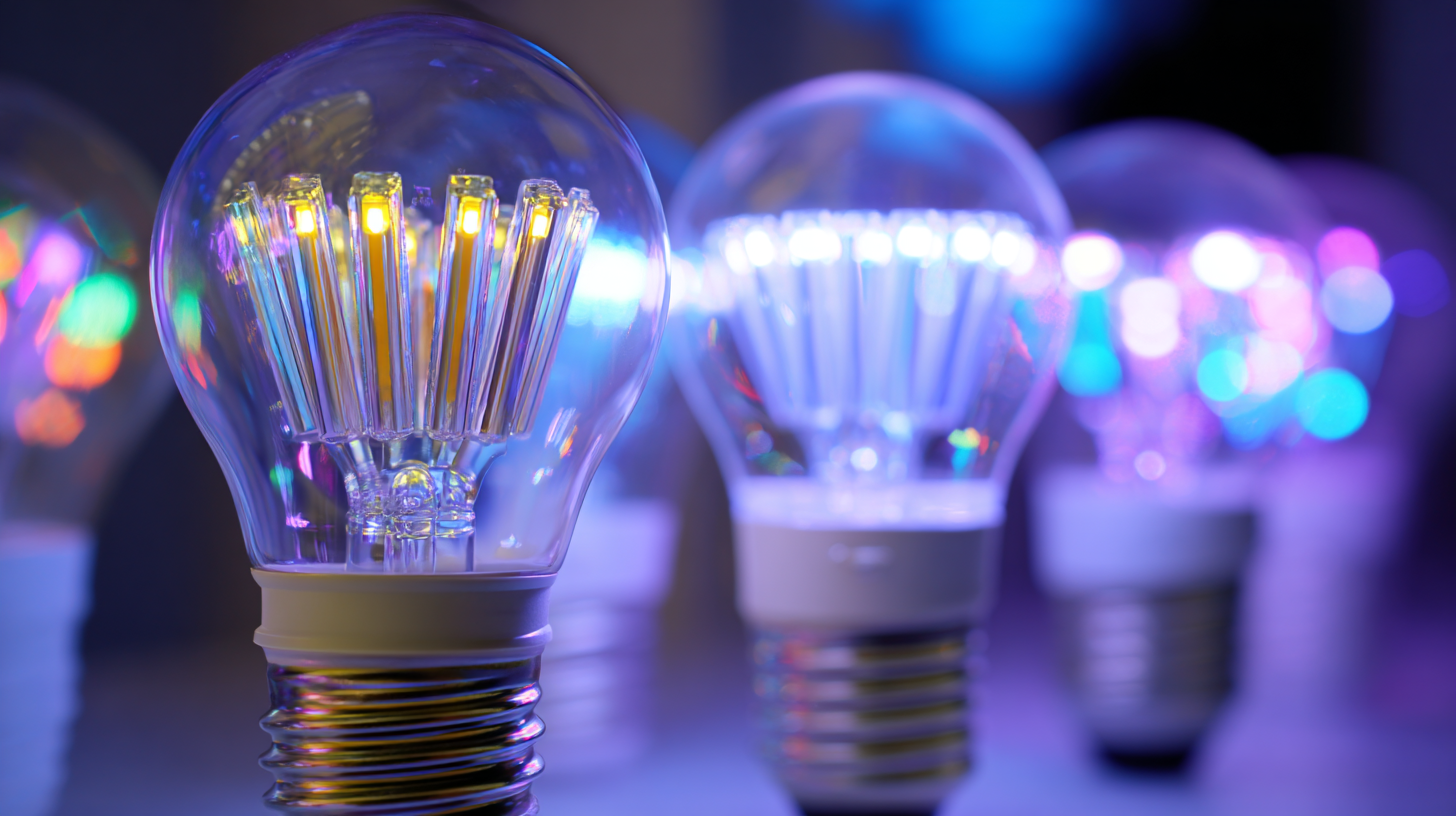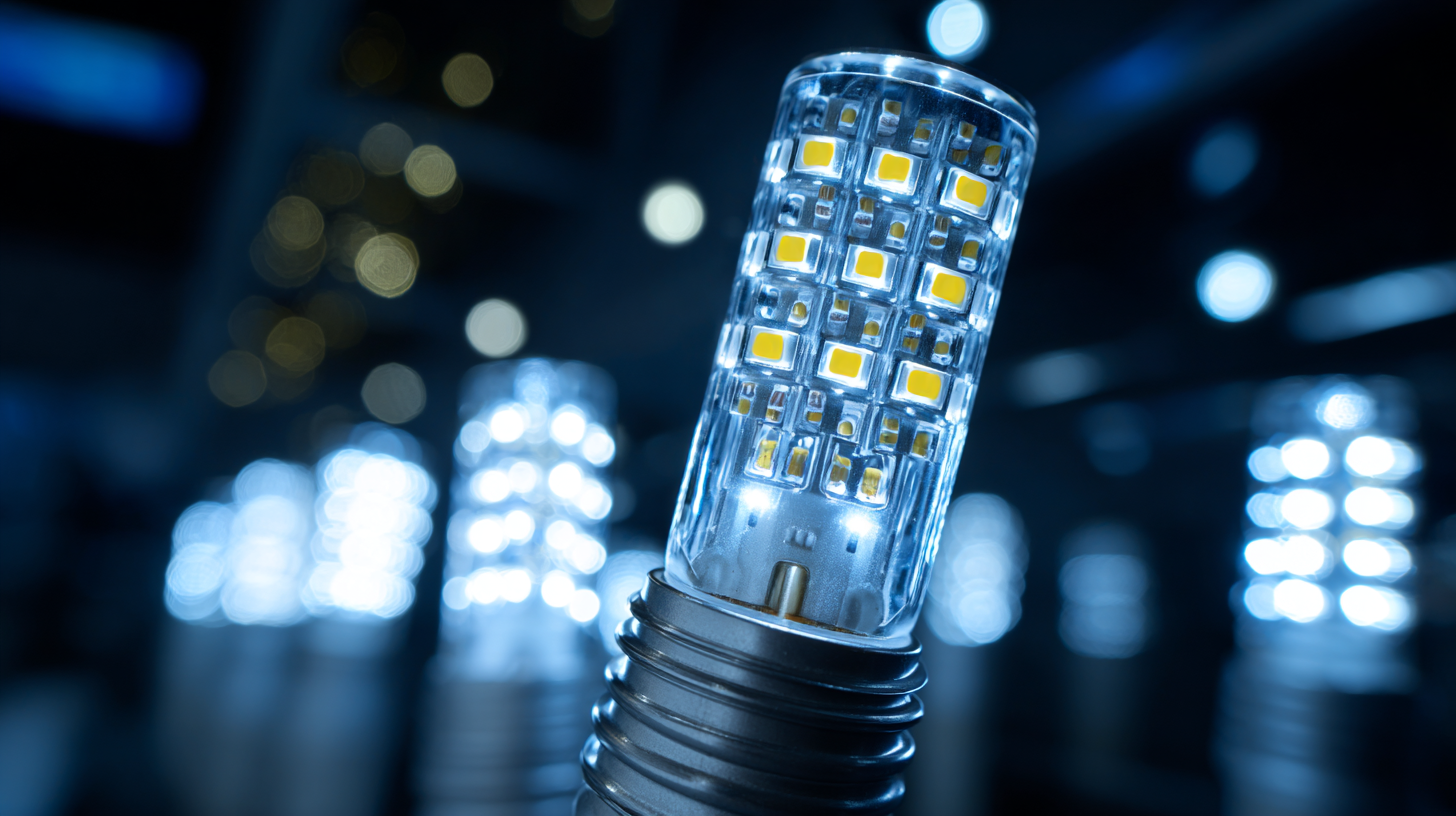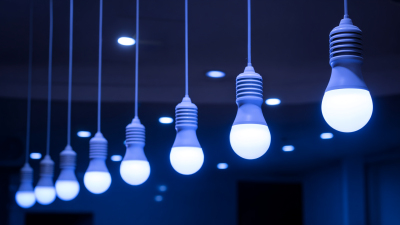How to Harness the Power of LED Technology for Energy Efficiency
LED technology has revolutionized the way we approach energy consumption, significantly impacting both residential and commercial sectors. According to a recent report by the U.S. Department of Energy, widespread adoption of LED lighting could save approximately 348 terawatt-hours (TWh) of electricity by 2035, translating to $30 billion in energy savings annually. These figures underscore the immense potential of LED technology in enhancing energy efficiency. With LEDs consuming up to 75% less energy than traditional incandescent bulbs and lasting up to 25 times longer, they contribute not only to reduced energy bills but also to a decrease in greenhouse gas emissions. As more organizations recognize the financial and environmental benefits of LED lighting, leveraging this technology becomes imperative for achieving sustainable energy solutions.

In this guide, we will explore practical strategies for harnessing LED technology to maximize energy efficiency and align with the goals of a greener future.
Understanding LED Technology: Key Innovations Driving Energy Efficiency
LED technology has revolutionized the lighting industry, becoming a cornerstone of energy efficiency. One of the key innovations driving this shift is the development of solid-state lighting (SSL), which utilizes semiconductor materials to convert electricity into light. Unlike traditional incandescent bulbs, which waste a significant amount of energy as heat, LEDs emit light more efficiently, resulting in lower energy consumption. This efficiency not only reduces electricity bills for consumers but also lessens the environmental impact associated with energy production and consumption.
Another significant advancement in LED technology is the integration of smart lighting systems. These systems allow for greater control over energy usage by enabling users to adjust brightness, color temperature, and even set schedules for lighting needs. Moreover, the compatibility of LEDs with smart home devices has made it easier to implement energy-saving practices, such as automatically turning off lights when a room is unoccupied. As the technology continues to evolve, further innovations like improved driver circuits and enhanced thermal management are expected to propel LEDs toward even greater energy efficiency, making them a preferred choice in both residential and commercial lighting applications.
Analyzing Energy Consumption: Comparing LEDs to Traditional Lighting Solutions
When it comes to energy consumption, the comparison between LED lighting and traditional solutions like incandescent or fluorescent bulbs reveals significant advantages of LED technology. LEDs consume up to 80% less energy and have a much longer lifespan, which translates to not only lower electricity bills but also reduced environmental impact. Traditional bulbs generate more heat, wasting energy that LEDs harness effectively for light output.
Tip: To maximize energy efficiency, consider replacing high-use areas, such as hallways and living rooms, with LED fixtures. Not only will this reduce energy consumption, but it will also enhance the ambiance of your space.
Furthermore, the versatility of LED lighting allows for various applications, from residential to commercial spaces. This adaptability means that users can select specific LEDs designed for particular tasks or effects, ensuring that lighting is both functional and energy-efficient.
Tip: Implement smart lighting controls, such as timers and dimmers, alongside your LED setup. This will further increase energy savings by reducing usage when light is not needed.
Implementing LED Solutions: Strategic Planning for Cost Savings and Performance
 Implementing LED solutions requires strategic planning to ensure both cost savings and enhanced performance. As urbanization accelerates in developing regions, effective municipal solid waste management is becoming critical. Similar to addressing waste challenges, the deployment of LED technology also requires a comprehensive approach to planning and resources. Organizations must assess their existing lighting systems and identify the most suitable LED solutions that align with their operational needs.
Implementing LED solutions requires strategic planning to ensure both cost savings and enhanced performance. As urbanization accelerates in developing regions, effective municipal solid waste management is becoming critical. Similar to addressing waste challenges, the deployment of LED technology also requires a comprehensive approach to planning and resources. Organizations must assess their existing lighting systems and identify the most suitable LED solutions that align with their operational needs.
Furthermore, drawing parallels from the adoption of AI in various sectors, businesses can benefit from analyzing their energy usage and setting clear objectives for LED implementation. This includes conducting cost analyses to showcase potential savings, utilizing data-driven insights to determine optimal lighting setups, and training staff to adapt to new technologies. By leveraging successful strategies from other industries, companies can incorporate LED technology as a substantial step towards energy efficiency, ultimately benefitting both their bottom line and environmental sustainability.
Measuring Impact: Assessing Energy Savings and Environmental Benefits from LEDs
The transition to LED technology has significant implications for energy savings and environmental benefits. According to the U.S. Department of Energy, LED lighting can use up to 75% less energy than incandescent bulbs and last 25 times longer. This remarkable efficiency not only translates to lower electricity bills but also reduces the demand on power plants, leading to decreased carbon emissions. A recent study by the Energy Efficient Lighting initiative reported that widespread adoption of LED lighting could result in a 1.8 billion metric ton reduction in greenhouse gas emissions over the next 15 years.

Additionally, the environmental benefits of LED lighting extend beyond energy savings. The National Electrical Manufacturers Association indicates that the shift to LED can also reduce hazardous waste, as LEDs contain no toxic materials like mercury, which is present in many traditional bulbs. Furthermore, the reduction in energy consumption leads to lower levels of air pollutants generated from fossil fuels, contributing to improved air quality. As consumers and businesses increasingly embrace LED technology, the cumulative impact on both energy efficiency and environmental health is profound, underscoring the importance of this lighting revolution in addressing climate change.
Future Trends: Exploring the Potential of Smart LEDs in Sustainable Energy Practices
The evolution of LED technology has revolutionized energy efficiency, and the future is poised for even greater advancements with the introduction of smart LEDs. These innovative lighting solutions are equipped with sensors and connectivity features that allow them to adapt in real time based on environmental conditions and user preferences. By integrating smart LEDs into homes and commercial spaces, we can significantly reduce energy consumption while enhancing convenience and comfort. For instance, smart lighting can automatically adjust brightness based on natural light levels or be programmed to switch off in unoccupied areas, leading to substantial energy savings.
Moreover, the potential of smart LEDs extends beyond individual applications to include their role in broader sustainable energy practices. By connecting smart LED systems to renewable energy sources like solar panels, users can optimize energy usage patterns and even store excess energy for later use. Additionally, these systems can be part of smart grids, helping to balance energy demand and supply more effectively. As cities around the world push for greener initiatives, the implementation of smart LEDs presents a compelling strategy to meet sustainability goals and reduce carbon footprints, paving the way for a brighter and more energy-efficient future.
Related Posts
-

Benefits of Using LED Fixtures for Enhanced Energy Efficiency
-

How to Maximize Energy Efficiency with LED Technology for Your Business Operations
-

What Are the Key Benefits of Using Grow Lights in Modern Agriculture?
-

7 Best Strategies for Choosing the Perfect LED Panel for Your Space
-

Exploring the Advantages of LED High Bay Lights for Optimal Industrial Lighting Solutions
-

How to Choose the Right LED Flood Lights for Your Outdoor Spaces
